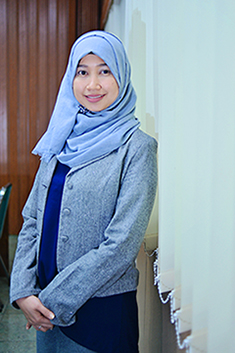Risk Factor Analysis of Adverse Effects of Kanamycin and Capreomycin on Kidney Function in Multidrug-Resistant TB Patients
Downloads
Background: Multidrug-Resistant TB treatment's high side effects and long duration are barriers to successful TB therapy. Various side effects such as age, gender, body weight, comorbidities, and drug dose can cause severe side effects, including impaired renal function (nephrotoxic). Objectives: This study aimed to analyze the risk factors of side effects of the failure of kanamycin and capreomycin therapy that can cause impaired renal function in Multidrug-Resistant TB patients. Methods: Data were collected retrospectively by searching and recording the medical records of Multidrug-Resistant TB patients at the Multidrug-Resistant TB Polyclinic. There were 183 patients at Dr Soetomo Hospital who met the inclusion criteria. Results: There was a significant relationship between gender in the kanamycin group and the appearance of side effects of renal impairment (p= 0.035). There was no effect of age, comorbid diseases, body weight, and dose of drug administration on the side effects of kanamycin and capreomycin in treating Multidrug-Resistant TB on impaired renal function (nephrotoxic). However, nephrotoxic side effects in elderly patients were more common in the kanamycin group (p=0.001). Conclusion: Gender affects the side effects of kanamycin and capreomycin in treating Multidrug-Resistant TB in nephrotoxic patients. In addition, stricter supervision of the use of kanamycin in elderly patients (>40 years) to minimize the incidence of side effects of impaired renal function in the treatment of Multidrug-Resistant TB.
Ahmad, N. et al. (2018) 'Occurrence, Management, and Risk Factors for Adverse Drug Reactions in Multidrug Resistant Tuberculosis 'Patients', American Journal of Therapeutics, 25(5), pp. e533–e540. Available at: https://doi.org/10.1097/MJT.0000000000000421
Alene, K.A. et al. (2019) 'Risk factors for multidrug"resistant tuberculosis in northwest Ethiopia: A case–control 'study', Transboundary and Emerging Diseases, p. tbed.13188. Available at: https://doi.org/10.1111/tbed.13188.
Dinkes Jatim (2018) ‘Profil Kesehatan Jawa Timur 2018', Dinas Kesehatan Provinsi Jawa Timur [Preprint].
Heysell, S.K. et al. (2018) 'Hearing loss with kanamycin treatment for multidrug-resistant tuberculosis in 'Bangladesh', European Respiratory Journal, 51(3), p. 1701778. Available at: https://doi.org/10.1183/13993003.01778-2017.
Kemenkes RI (2019) Panduan Pelayanan Tuberkulosis Resistan Obat untuk Fasilitas Pelayanan Kesehatan. 3rd edn. Jakarta: Kementrian Kesehatan Republik Indonesia dan Gerakan Masyarakat Hidup Sehat.
Kwiatkowska, E. et al. (2021) 'The Mechanism of Drug Nephrotoxicity and the Methods for Preventing Kidney Damage', International Journal of Molecular Sciences, 22(11), p. 6109. Available at: https://doi.org/10.3390/ijms22116109.
Longe, S.S. and H, D.R.B.S. (2022) ‘Gambaran Efek Samping Kanamisin Pada Pengobatan Pasien Mdr-Tb Di RSUD Kota Jayapura', Jurnal DINAMIS, 19(1), pp. 41–48.
Mamlouk, O. et al. (2019) 'Nephrotoxicity of immune checkpoint inhibitors beyond tubulointerstitial nephritis: single-center 'experience', Journal for ImmunoTherapy of Cancer, 7(1), p. 2. Available at: https://doi.org/10.1186/s40425-018-0478-8.
Molitoris, B.A. (2017) 'Pathogenesis and prevention of aminoglycoside nephrotoxicity and 'ototoxicity'.
Muñoz-Torrico, M. et al. (2017) ‘Diabetes is Associated with Severe Adverse Events in Multidrug-Resistant Tuberculosis', Archivos de Bronconeumología (English Edition), 53(5), pp. 245–250. Available at: https://doi.org/10.1016/j.arbr.2016.10.003.
Mwansasu, C., Siziya, S. and Mpondo, B. (2017) 'Hearing loss among multi drug resistant tuberculosis patients on kanamycin in Ndola teaching hospital, Zambia: study of ototoxicity and 'practice', Health Press Zambia Bull, 1(4), pp. 8–72.
Nugroho, F.S., Shaluhiyah, Z. and Adi, S. (2018) ‘Gambaran Perilaku Pengobatan Pasien TB MDR Fase Intensif Di Rs Dr Moewardi Surakarta', Jurnal Kesehatan, 11(1), pp. 32–42. Available at: https://doi.org/10.23917/jk.v11i1.7003.
Onuka, O. et al. (2017) 'A Case Study of Multi Drug-Resistant Tuberculosis (MDR-TB), HIV and Diabetes Mellitus (Dm) Comorbidity: Triple Pathology; Challenges and 'Prospects', Advances in Infectious Diseases, 07(03), pp. 70–79. Available at: https://doi.org/10.4236/aid.2017.73008.
Penn-Nicholson, A. et al. (2022) 'Detection of isoniazid, fluoroquinolone, ethionamide, amikacin, kanamycin, and capreomycin resistance by the Xpert MTB/XDR assay: a cross-sectional multicentre diagnostic accuracy 'study', The Lancet Infectious Diseases, 22(2), pp. 242–249. Available at: https://doi.org/10.1016/S1473-3099(21)00452-7.
Purnasari, C., Manggau, M.A. and Kasim, H. (2019) ‘Studi Pengaruh Dosis Dan Lama Penggunaan Terapi Aminoglikosida Terhadap Fungsi Ginjal', Majalah Farmasi dan Farmakologi, 22(3), pp. 76–80. Available at: https://doi.org/10.20956/mff.v22i3.5807.
Ratnawati, M. et al. (2018) ‘Pengaruh Faktor Risiko terhadap Waktu Timbulnya Efek Samping Kanamisin pada Tuberkulosis Resistan Obat', Majalah Kedokteran Bandung, 50(2), pp. 86–92. Available at: https://doi.org/10.15395/mkb.v50n2.1297.
Reviono et al. (2014) ‘Multidrug Resistant Tuberculosis (MDR-TB): Tinjauan Epidemiologi dan Faktor Risiko Efek Samping Obat Anti Tuberkulosis', Majalah Kedokteran Bandung, 46(4), pp. 189–196. Available at: https://doi.org/10.15395/mkb.v46n4.336.
Shibeshi, W. et al. (2019) 'Nephrotoxicity and ototoxic symptoms of injectable second-line anti-tubercular drugs among patients treated for MDR-TB in Ethiopia: a retrospective cohort 'study', BMC Pharmacology and Toxicology, 20(1), p. 31. Available at: https://doi.org/10.1186/s40360-019-0313-y.
Soedarsono, S., Kusmiati, T. and Permatasari, A. (2021) 'Effect of Diabetes Mellitus on Renal and Audiology Toxicities in Patients with Drug-Resistant Pulmonary 'Tuberculosis', Archives of Clinical Infectious Diseases, 16(2). Available at: https://doi.org/10.5812/archcid.99260.
Soeroto, A.Y. et al. (2019) 'Comparison of Serum Potassium, MagnEsium, and Calcium Levels between Kanamycin and Capreomycin-BASEd Regimen-Treated MultiDrug-Resistant TuBerculosis Patients in Bandung (CEASE MDR-TB): A Retrospective Cohort 'Study', International Journal of Microbiology, 2019, pp. 1–7. Available at: https://doi.org/10.1155/2019/5065847.
Suparyatmo, J.. et al. (2014a) ‘Kalium di Multi Drug Resistance Tuberkulosis dengan Pengobatan Kanamisin', Indonesia Journal of Clinical Pathology and Medical Laboratoty, 21(1), pp. 16–19. Available at: file:///C:/Users/USER/Downloads/1009-1744-1-SM.pdf.
Suparyatmo, J.. et al. (2014b) ‘Kalium di Multi Drug Resistance Tuberkulosis dengan Pengobatan Kanamisin', Indonesia Journal of Clinical Pathology and Medical Laboratoty, 21(1), pp. 16–19.
Tamirat, K.S., Andargie, G. and Babel, Y.A. (2020) 'Factors influencing the length of hospital stay during the intensive phase of multidrug-resistant tuberculosis treatment at Amhara regional state hospitals, Ethiopia: a retrospective follow up 'study', BMC Public Health, 20(1), p. 1217. Available at: https://doi.org/10.1186/s12889-020-09324-x.
Tonneijck, L. et al. (2017) ‘Glomerular Hyperfiltration in Diabetes: Mechanisms, Clinical Significance, and Treatment', Journal of the American Society of Nephrology, 28(4), pp. 1023–1039. Available at: https://doi.org/10.1681/ASN.2016060666.
WHO (2016) 'Global Tuberculosis Report '2016', Geneva: World Health Organization [Preprint].
WHO (2019) 'Global Tuberculosis Report '2019', Geneva: World Health Organization [Preprint].
Wijaya, I. (2015) ‘Continuing Medical Education Tuberkulosis Paru pada Penderita Diabetes Melitus', Cdk-229, 42(6), pp. 412–417.
Copyright (c) 2023 JURNAL FARMASI DAN ILMU KEFARMASIAN INDONESIA

This work is licensed under a Creative Commons Attribution-NonCommercial-ShareAlike 4.0 International License.
1. The copyright of this journal belongs to the Editorial Board and Journal Manager with the author's knowledge, while the moral right of the publication belong to the author.
2. The formal legal aspect of journal publication accessibility refers to the Creative Commons Attribution-Non-Commercial-Share Alike (CC BY-NC-SA), which implies that the publication can be used for non-commercial purposes in its original form.
3. Every publication (print/electronic) is open access for educational, research, and library purposes. In addition to the objectives mentioned above, the editorial board is not responsible for copyright infringement


.jpg)















